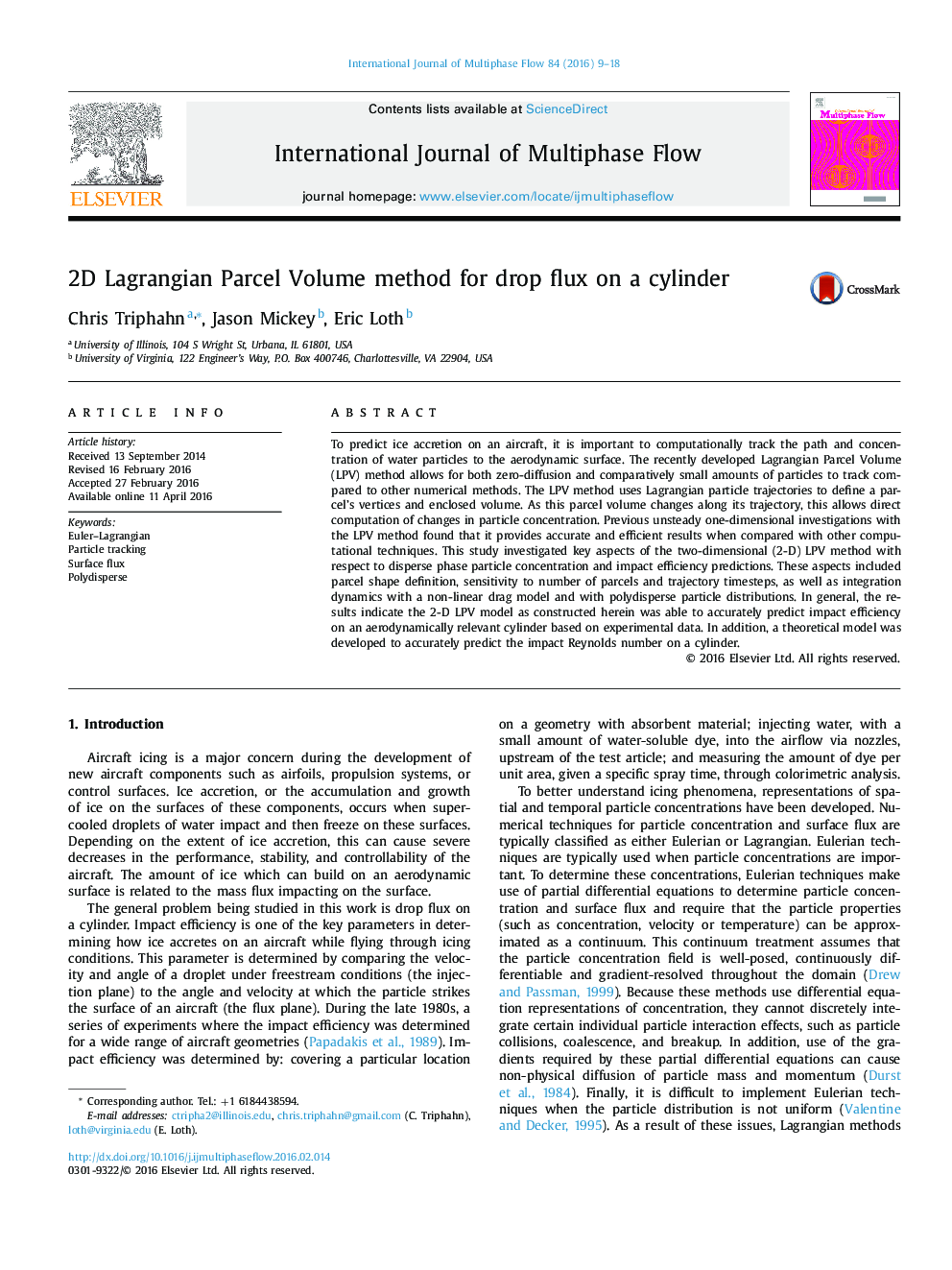| Article ID | Journal | Published Year | Pages | File Type |
|---|---|---|---|---|
| 7060254 | International Journal of Multiphase Flow | 2016 | 10 Pages |
Abstract
To predict ice accretion on an aircraft, it is important to computationally track the path and concentration of water particles to the aerodynamic surface. The recently developed Lagrangian Parcel Volume (LPV) method allows for both zero-diffusion and comparatively small amounts of particles to track compared to other numerical methods. The LPV method uses Lagrangian particle trajectories to define a parcel's vertices and enclosed volume. As this parcel volume changes along its trajectory, this allows direct computation of changes in particle concentration. Previous unsteady one-dimensional investigations with the LPV method found that it provides accurate and efficient results when compared with other computational techniques. This study investigated key aspects of the two-dimensional (2-D) LPV method with respect to disperse phase particle concentration and impact efficiency predictions. These aspects included parcel shape definition, sensitivity to number of parcels and trajectory timesteps, as well as integration dynamics with a non-linear drag model and with polydisperse particle distributions. In general, the results indicate the 2-D LPV model as constructed herein was able to accurately predict impact efficiency on an aerodynamically relevant cylinder based on experimental data. In addition, a theoretical model was developed to accurately predict the impact Reynolds number on a cylinder.
Related Topics
Physical Sciences and Engineering
Chemical Engineering
Fluid Flow and Transfer Processes
Authors
Chris Triphahn, Jason Mickey, Eric Loth,
